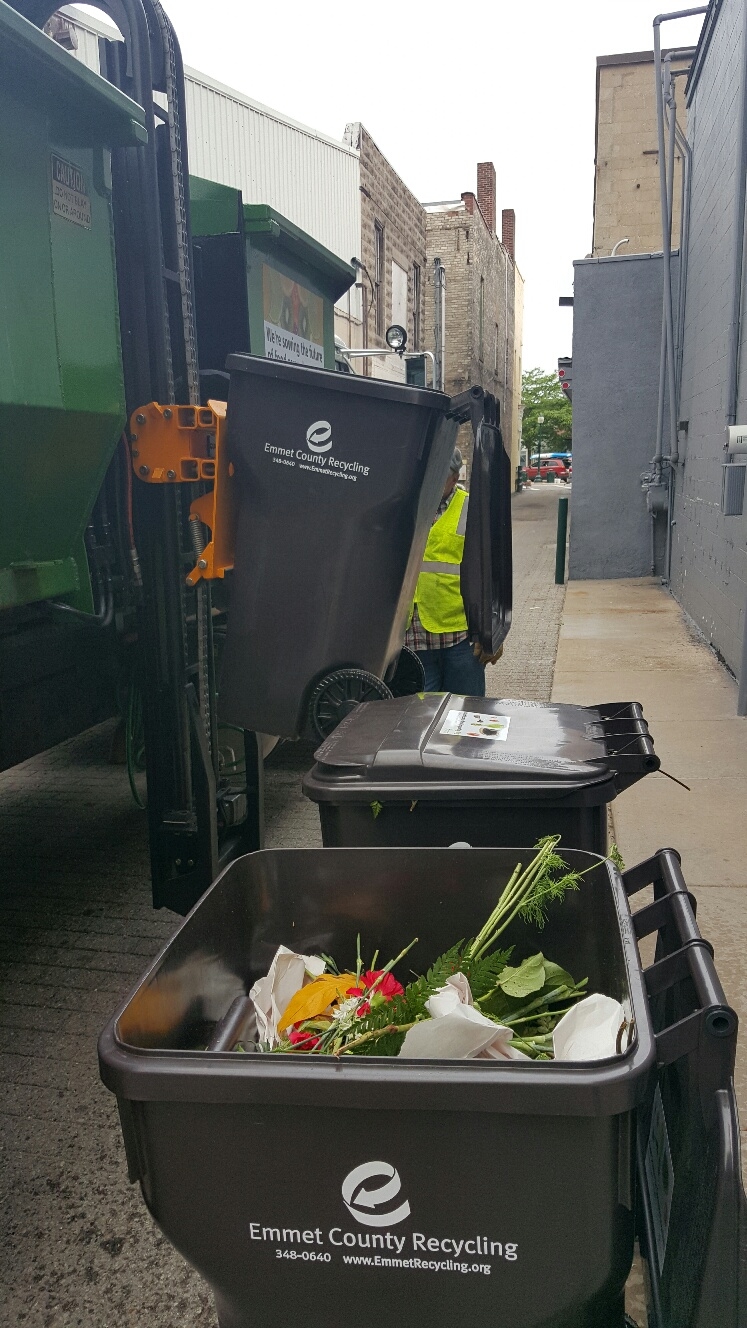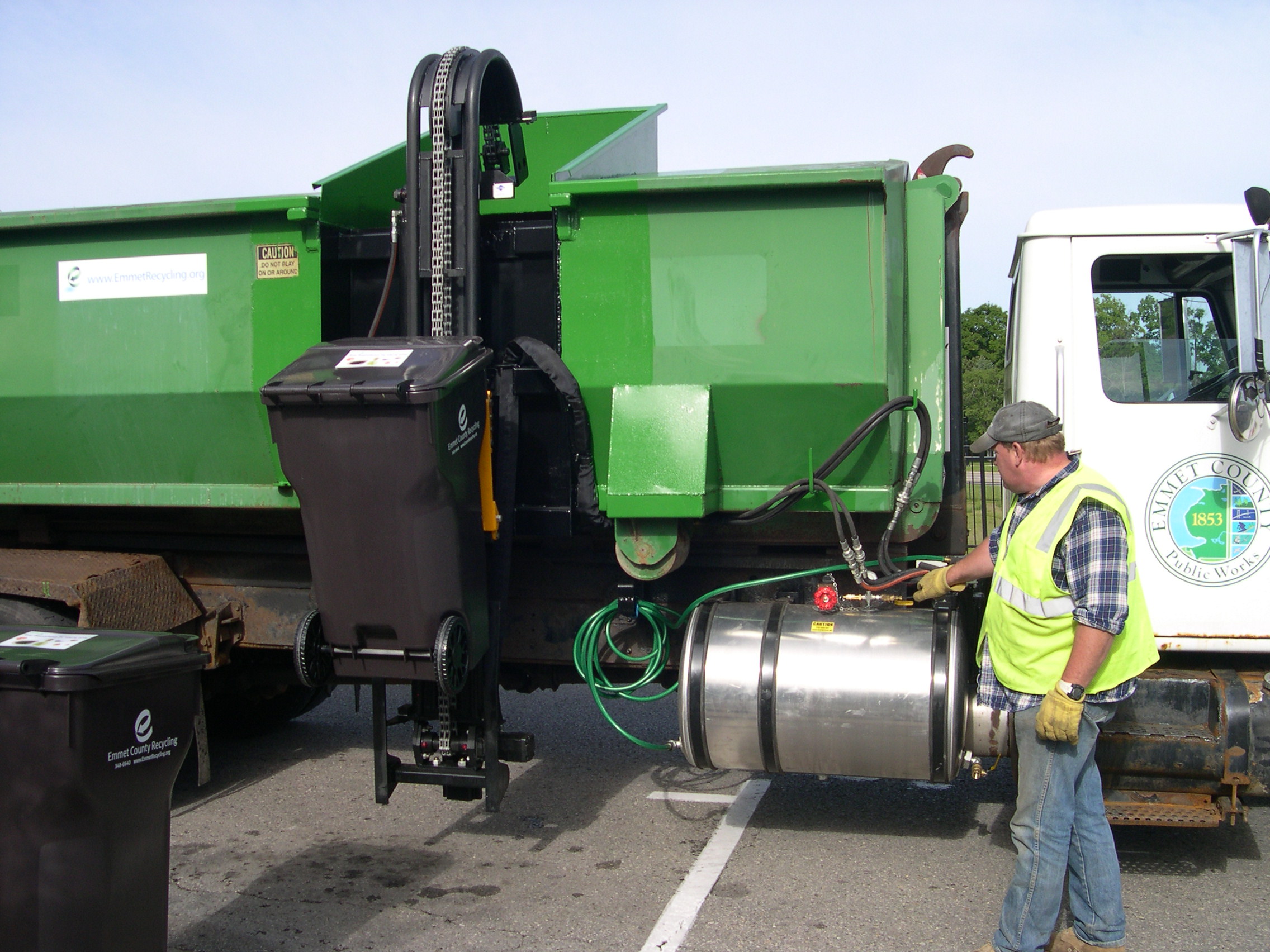According to the EPA, we Americans generate approximately 4.4 pounds of individual waste per person, per day1. Of the 254 million tons of municipal solid waste generated in 2013, 14.6%, or over 37 million tons was food waste2. My stomach groans at the thought, but what causes even more indigestion is that approximately 96% of food that could be composted, ended up in a landfill or incinerated3.
 Now before you jump to the comments section to tell me about the various methods, benefits, or obstacles of recovering food waste, today we’re discussing one specific obstacle with organics – how do you collect it?
Now before you jump to the comments section to tell me about the various methods, benefits, or obstacles of recovering food waste, today we’re discussing one specific obstacle with organics – how do you collect it?
You can’t simply add another cart to the curb and have the truck swing by a second time. Why not? Well, I went to an expert to get the lowdown on food waste.
Nicole Chardoul is a principal and vice president here at RRS, and is also the chair of the Washtenaw County Food Policy Council. She has been involved and led several projects with municipalities, universities and hospitals that have focused on pre- and post-consumer food waste recovery, not to mention numerous compost site design, program implementation and planning projects.
“Food waste is wet, heavy and you don’t want it sitting in your curb cart or at your dock for too long because it starts to break down quickly. Also, you don’t want to mix it with your recycling as this will contaminate the load. These traits also cause weight and leak issues for traditional carts and trucks,” stated Nicole. “Traditional carts are sized to contain lighter recyclables – think mixed plastics and paper – but with food wastes, the larger carts can become heavy enough to stress the lift arm on the truck. And then there is the issue of liquid – traditional carts are constructed with small openings where the lift bar is connected to the cart. Carts are now designed smaller and leak free specifically for collecting organics from the kitchen to the curb.”
I’m sure we all have the queasy image of the leaky cart at curbside, not to mention a traditional truck compacting food waste as it leaves behind a liquid trail while driving down the street.
What can be done?
Nicole highlighted a recent project with Emmet County in the northwest lower peninsula of Michigan. Emmet County experiences a short composting season due to the long and snowy winters, however the high number of vacationers who create significant demand for food service establishments, have the potential to generate a large volume of available commercial food scraps. The county has a current compost site that pays for its program through the yard waste tip fee and sale of finished compost to area farms, landscapers and construction projects.
“If a community has a curb cart collection of yard waste, food waste is a nice nitrogen-rich addition to the mix, and doesn’t require additional carts or trucks,” stated Nicole.
 But, as we know from above, simply adding food scraps to the “accepted” list isn’t going to work.
But, as we know from above, simply adding food scraps to the “accepted” list isn’t going to work.
Emmet County chose to run a pilot program, funded from their Enterprise Fund through an authorization by their DPW board, which targeted 20 of their commercial food service establishments. The County modified a 15 cubic yard roll-off container including a dedicated motor, cart-tipper lift arm, water tank and power washer. This modified roll-off container could be placed on the bed of any available roll-off truck. This set-up would allow the driver to tip the cart into the roll-off container, determine if the cart needed to be washed, and use the power washer to rinse out the container before leaving it behind to collect more food scraps.
Obviously a high touch service, but not the only option. Nicole mentioned that some private haulers have trucks devoted and equipped specifically for food waste. One type has a built in mechanism that rinses the cart with a mist while it is tipped upside down above the truck. The wash water drips into the truck – adding a bit more moisture and weight to the load, but containing any external leakage.
Another option mentioned was a cart swap service that actually picks up full carts and leaves clean, empty carts. The full carts are emptied and washed at the compost facility. Talk about high touch service!
How did Emmet County’s pilot program fare?
Over the 20 week pilot program, 90,000 gallons of food and floral scraps were collected. These scraps were combined with yard waste at the Emmet County composting facility. The compost, tested for quality, is then made available for purchase. More details on participating establishments and their experiences were captured by the Harbor Light newspaper this past December: County’s Food Scrap Collection Program Shows Remarkable Results.
Emmet County’s pilot customers were thrilled with the service – so much so that the County is going to start the program back up in the spring and extend it to more customers and even try year-round collection and processing.
Note: The blog was updated to correctly reflect the Emmet County pilot program funding. Originally it was sited as funded through a grant, however it was funded from the county’s Enterprise Fund.
1 http://www.epa.gov/smm/advancing-sustainable-materials-management-facts-and-figures
2 http://www.epa.gov/sites/production/files/2015-09/smm_graphic_msw_generation_rates.jpg
3 http://www.epa.gov/sites/production/files/2015-09/documents/advncng_smm_infogrphc.pdf

